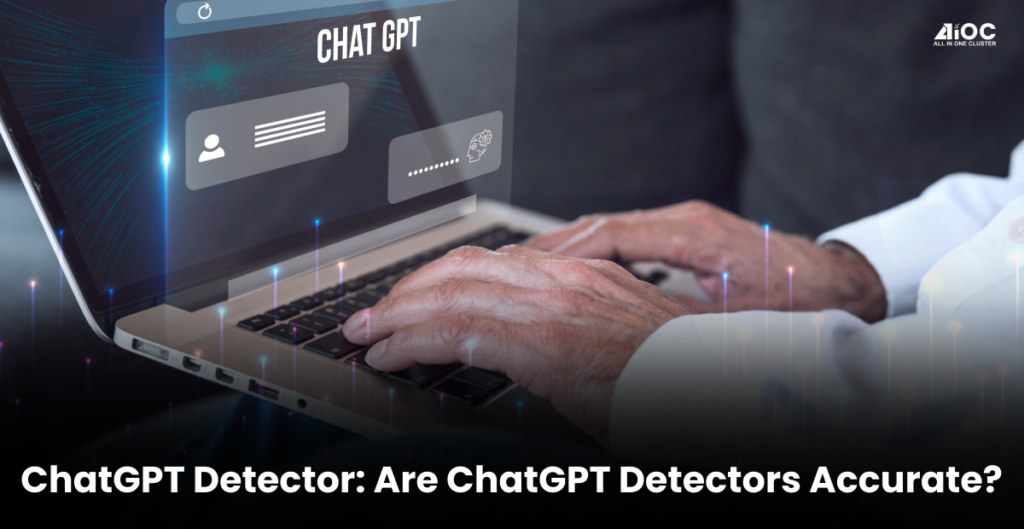AI content detection is not perfect, and it lets the AI content escape with small changes or when it is rephrased. These false positives can be very painful for anyone who created original content.
As much as the AI content spreads into industries and Academics, it is really important to speed up the process of finding Highly accurate AI detectors. There are already many ChatGPT Detector online, which can be easily tricked and easy to fool. This guide tells you about the low efficiency of the online AI detector tools and will stress the importance of developing new AI detection tools with accuracy.
So, Let’s dive in
What is AI Content Detection and how does it works?
An artificial intelligence that has been trained to distinguish increasingly minute differences between text produced by humans and artificial intelligence is called an AI content/ChatGPT Detector.
Most Common Error: A detection score of 60% AI and 40% Original should be interpreted as “there is a 60% chance that the content was AI-generated” and NOT as “60% of the article is AI generated and 40% is Original.”
If you are aware that the content was entirely written by you, a score of 60% Original and 40% AI is not a false positive. It accurately recognized the originality of the text.
Exactly why is AI content detection so crucial?
The potential for disruptive and perhaps catastrophic effects grows as material produced by AI becomes more widespread. AI has recently been used to copy human voices in order to perpetrate fraud, which is a perfect example.
One instance was trying to deceive a family into thinking their daughter had been abducted in order to demand a ransom payment. In another, a business executive was duped into sending more than $240,000 by a deep voice he mistook for his employer.
It might harm the integrity of educational systems and the reputations of schools and colleges if it is used by students to cheat on essays and examinations. Students may not be fully equipped for the occupations they want to pursue as a result, and degrees and certifications may lose value. All of this emphasises the significance of effective countermeasures to warn the public about the risks of AI and, if feasible, to identify or even prevent it.
Are ChatGPT detector accurate? What does the research say?
It’s become more difficult to distinguish language written by humans from text generated by an AI due to the advent of generative AI tools that the public may use for free, such as ChatGPT for text and Midjourney for photos.
Artificial intelligence, which includes automated computer systems, algorithms, and machine learning, has long been employed, mostly undetected, in social media, academic research, advertising, agriculture, and industry.
However, the emergence of OpenAI’s ChatGPT has sparked an arms race in settings like the classroom. Where students have used the program to cheat by writing completely human-sounding essays. In an effort to catch plagiarists in the act, teachers have deployed detecting software.
Stanford University’s Study on GPT Detectors
Stanford University researchers recently investigated how well these generative AI detectors are at identifying whether text was authored by a human or an AI in a new study, which was published on Monday in the journal Patterns.
The study group was shocked to discover that some of the most well-known GPT detectors, which are designed to identify text produced by applications like ChatGPT, frequently misclassified writing by non-native English speakers as AI generated, revealing shortcomings and biases users need to be aware of.
The team used 88 essays from eighth graders in the US and 91 TOEFL (Test of English as a Foreign Language) essays from a Chinese forum. They subjected them to seven commercial ChatGPT detector, including GPTZero and OpenAI’s detector, and discovered that just 5.1% of the US student essays were identified as “AI generated.” On the other side, 61% of the time, the human-written TOEFL essays were incorrectly categorized. 97.8% of the TOEFL essays were classified as AI produced by one particular detector.
The Study’s Findings and Implications
All seven detectors identified 18 of the 91 TOEFL essays as being created by artificial intelligence. The decreased “text perplexity” was probably the cause, the researchers observed after digging more into these 18 pieces.
A text’s perplexity might be thought of as a form of proxy for its variability or unpredictability. It has been demonstrated in the past that non-native English speakers employ less sophisticated grammar and have a smaller vocabulary. This gives the GPT detectors the impression that an AI wrote it.
Basically, you have a lower chance of being labelled as an AI if you use literary and verbose writing. However, this demonstrates a troubling bias and raises worries that non-native English speakers may be negatively impacted in situations like job interviews or school tests when their material is marked as artificial intelligence (AI)-generated.
Can You Trick AI Detectors Easily?
There is a fairly simple approach to mislead many of the AI detectors that are currently in use. By just changing a few phrases, one may avoid detection at the majority of current web detectors by utilizing a paraphrasing tool like Quillbot.
Conclusion
As AI grows more proficient at producing lifelike material and the makers of detection tools compete to stay up, it’s possible that we are only seeing the very beginning of what will be a “arms race” situation.
Not just technologists will engage in combat in this conflict. Our capacity to make reasoned judgements in every area of life, from politics to science, will be jeopardized if we come to realise that we can no longer believe what we read, watch, see, or hear.
Our greatest difence against these new problems will be a combination of technical solutions, human judgement, and educated monitoring and action from regulators and politicians when needed.
